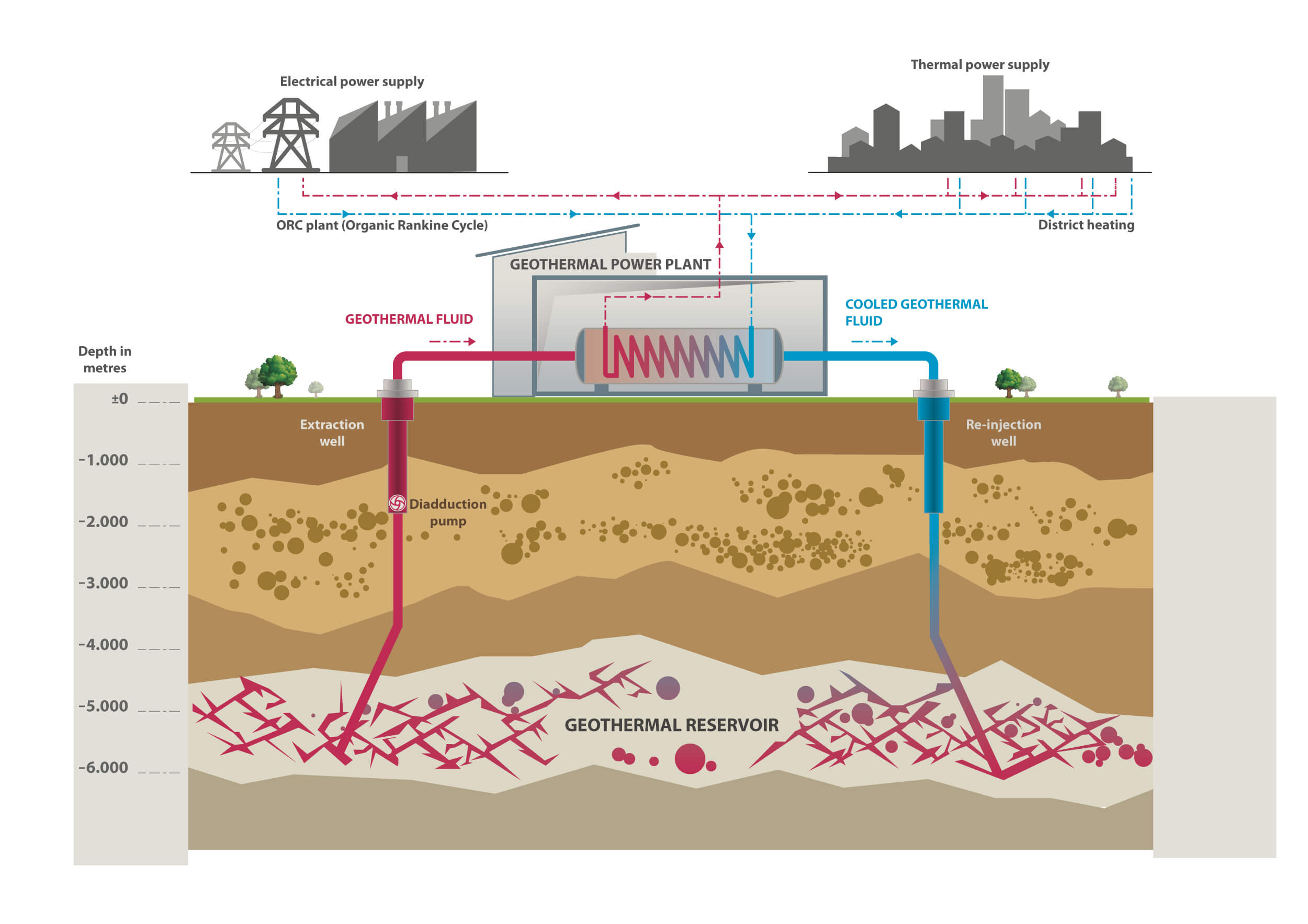How can we benefit of the geothermal resource?
Geothermal energy harnesses the natural heat of the Earth, stored in the rocks beneath its surface. This heat is generated by the Earth’s core and increases in temperature as you move deeper into the Earth, following a geothermal gradient that varies based on the type of rock.
The endogenous fluid, after releasing its heat on the surface, returns to its deep geothermal reservoir and is continuously reheated by the Earth’s natural heat. This perpetual cycle enables energy production without interruption or the need for storage, 24 hours a day, all year round.
Did you know?
In contrast to traditional geothermal fields, medium-enthalpy projects such as the one in Ostellato are characterised by the fact that all geothermal fluid, in its liquid state, is kept in overpressure within a closed circuit so that doesn’t not change its aggregate state.
Types of geothermal power plants
How does a medium-enthalpy geothermal power plant coupled with a closed-cycle thermodynamic cycle function?
Through the reservoir, the geothermal fluid is brought from the intake well to the heat exchanger of the ORC (Organic Rankine Cycle) turbine. The ORC process uses the geothermal fluid to transfer heat to a suitable organic process fluid that circulates within a closed loop and, as it heats up to vaporisation, drives a turbine coupled to a power generator, thus enabling the conversion of thermal energy into electricity.
The geothermal fluid is contained within the heat exchangers throughout the entire process until it is fully re-injected underground, ensuring that no atmospheric emissions are released. Additionally, the residual heat generated after electricity production can be utilized to provide heat to district heating networks. This closed-loop system allows for the sustainable cultivation of geothermal resources without any negative impact on the environment and ensures that the entire resource is returned into the geothermal reservoir of origin.
The benefits of the technology used in the Pangea project
- Zero Greenhouse Gas emission
- Green energy
- Ecological heating
- Low environmental impacts
- Weather-independent resource
- Supply 24/7 All year round
Frequently asked questions
This working fluid, which is circulated in a closed loop, vaporizes, and drives a turbine to produce electricity. After the heat exchange process, the geothermal fluid is injected back into the reservoir at a depth of more than 5,000 meters, maintaining the same volume and quality, without any emissions or pressure imbalances. The use of submerged pumps with ESP technology in wells enables the extraction of the well-defined level of fluid from the medium-enthalpy reservoir without the need to maintain pressure..
This process minimizes the environmental impact while harnessing the natural heat from the earth to produce clean energy.
